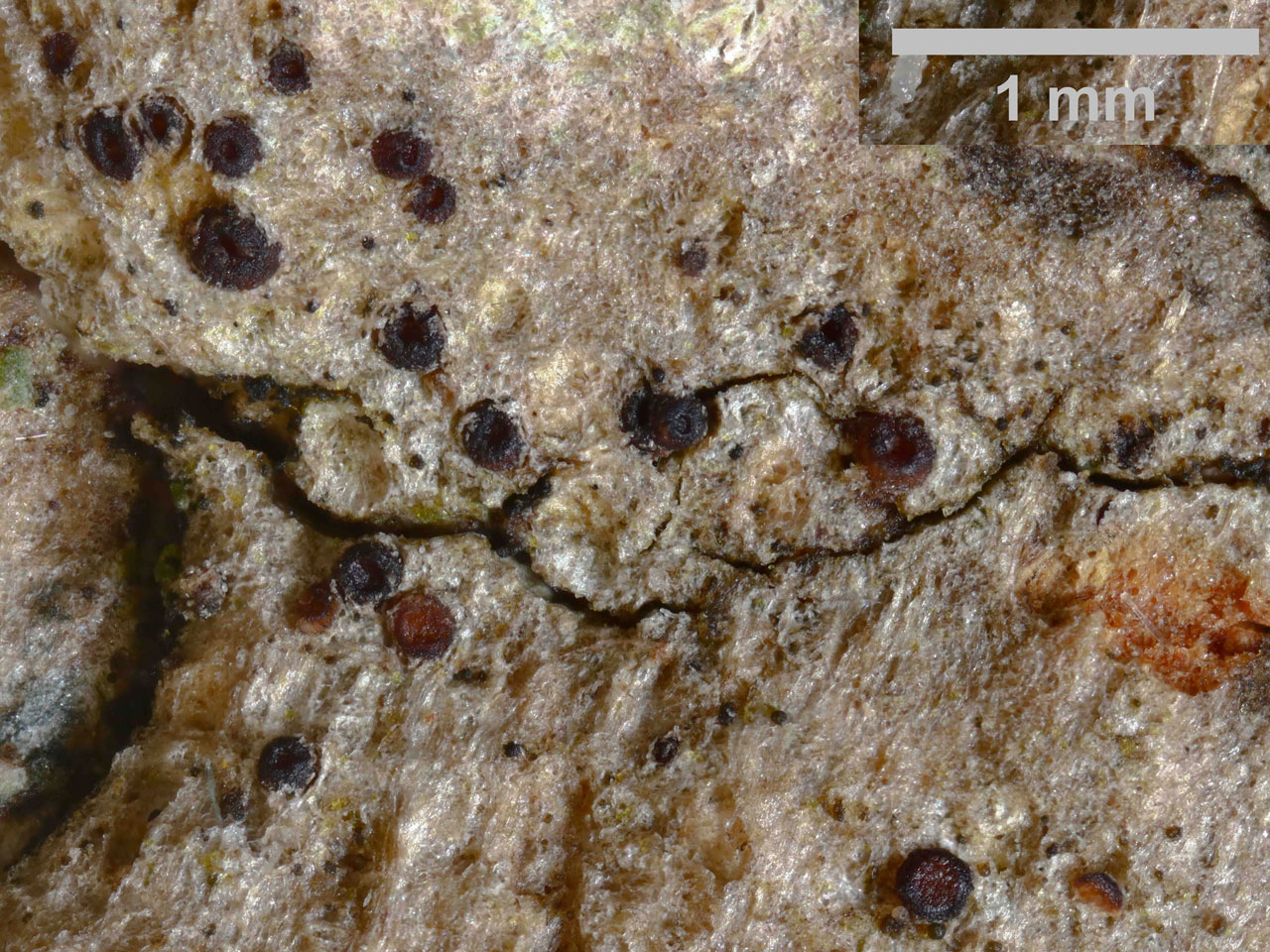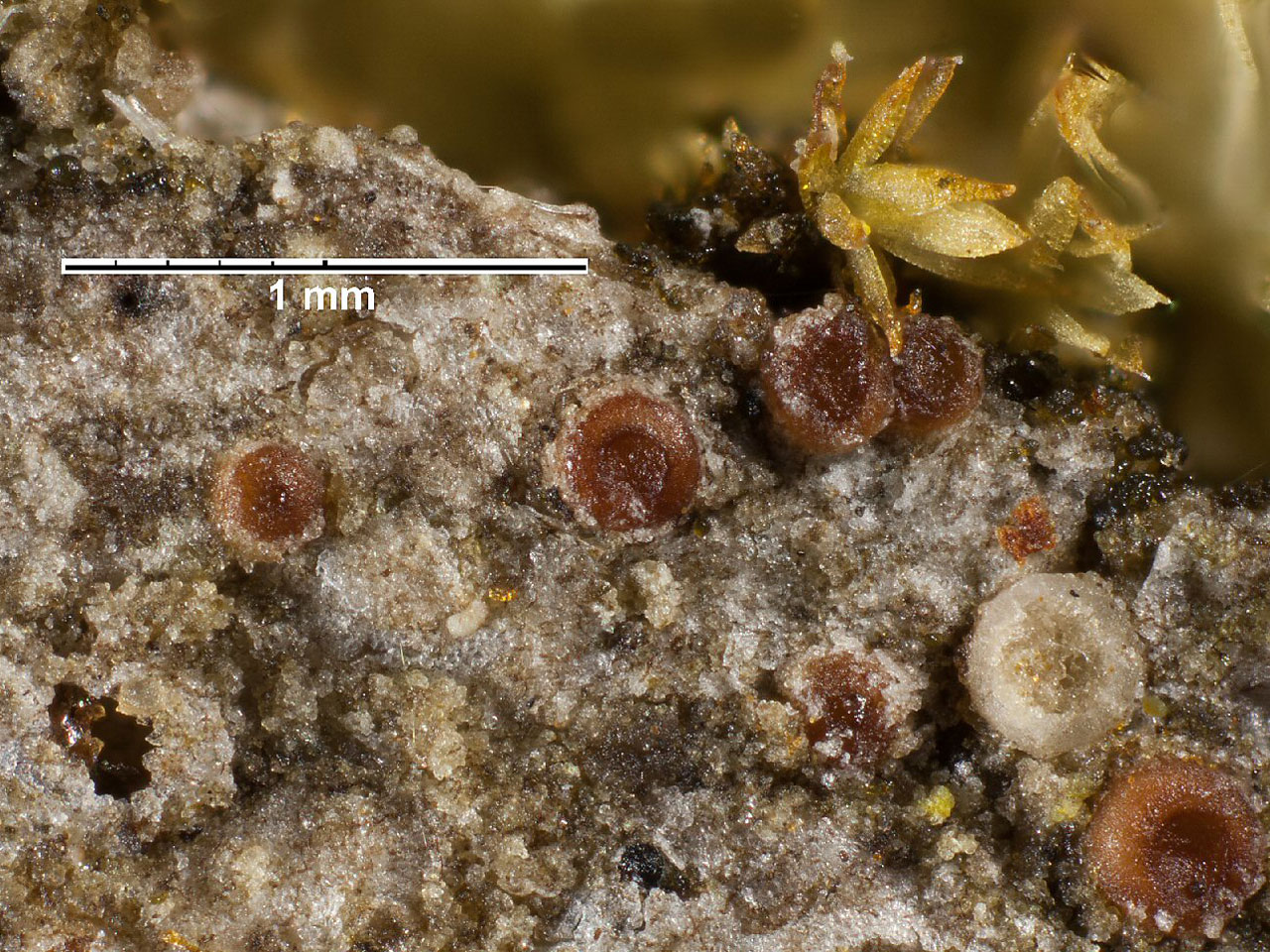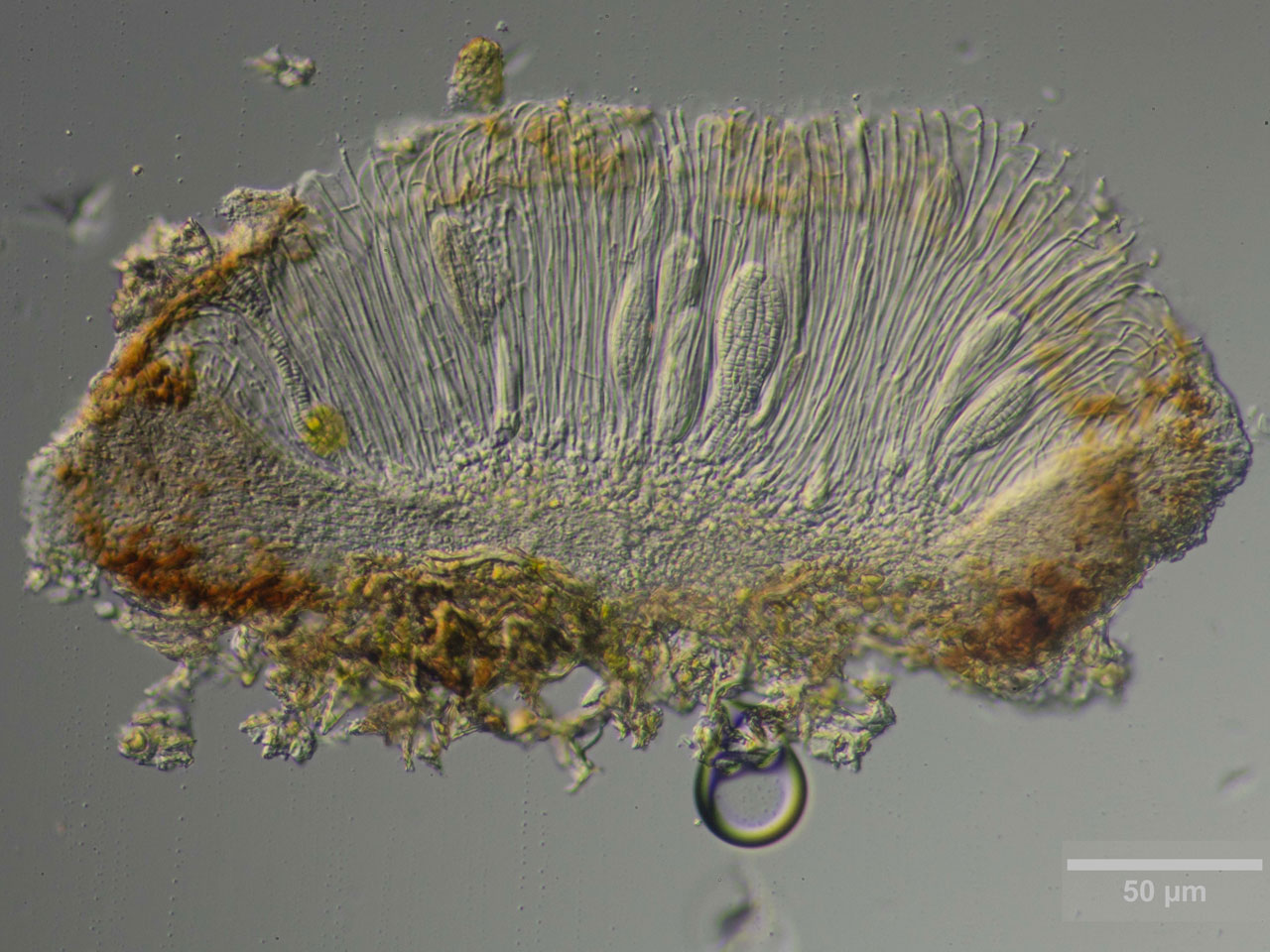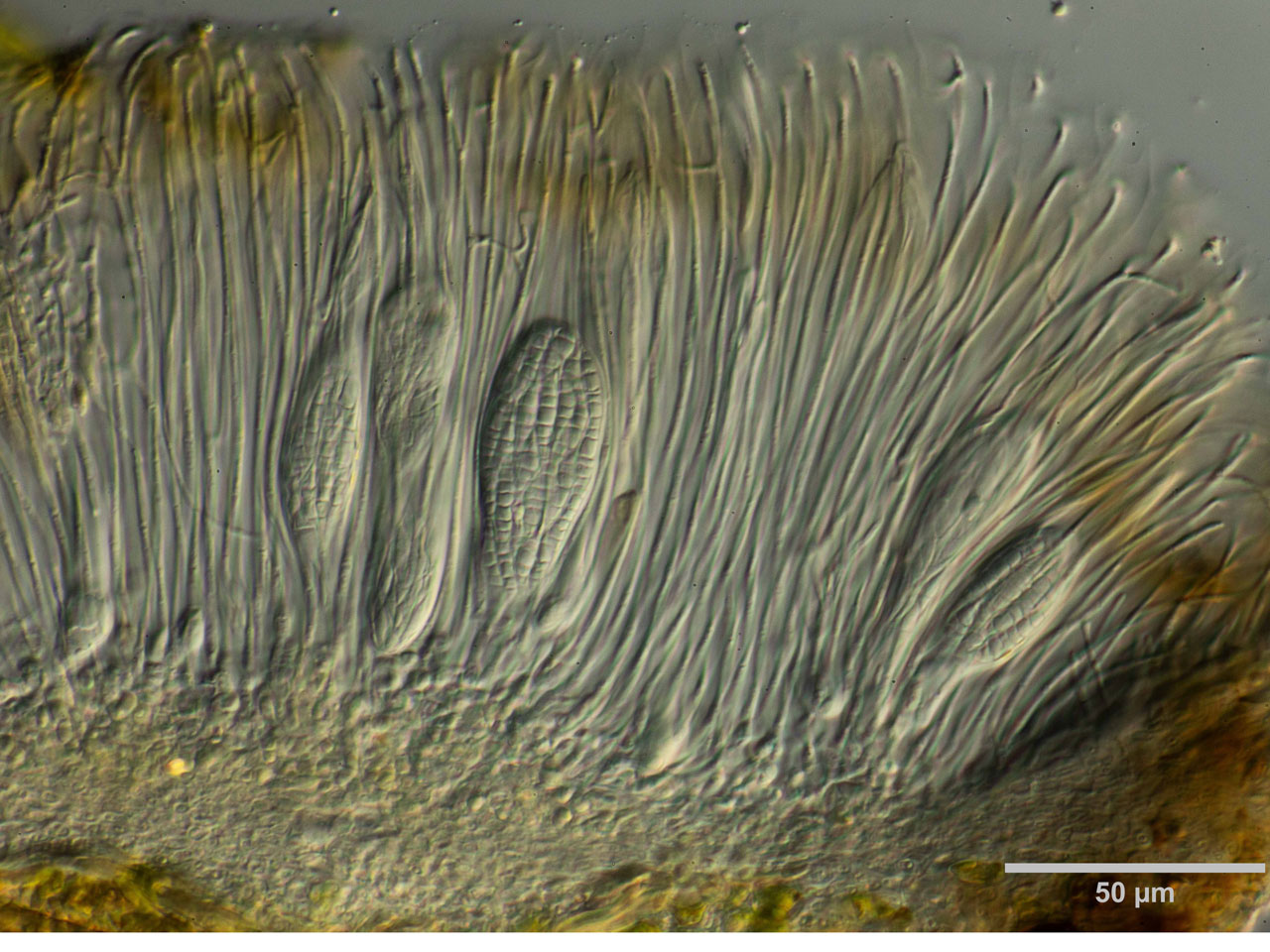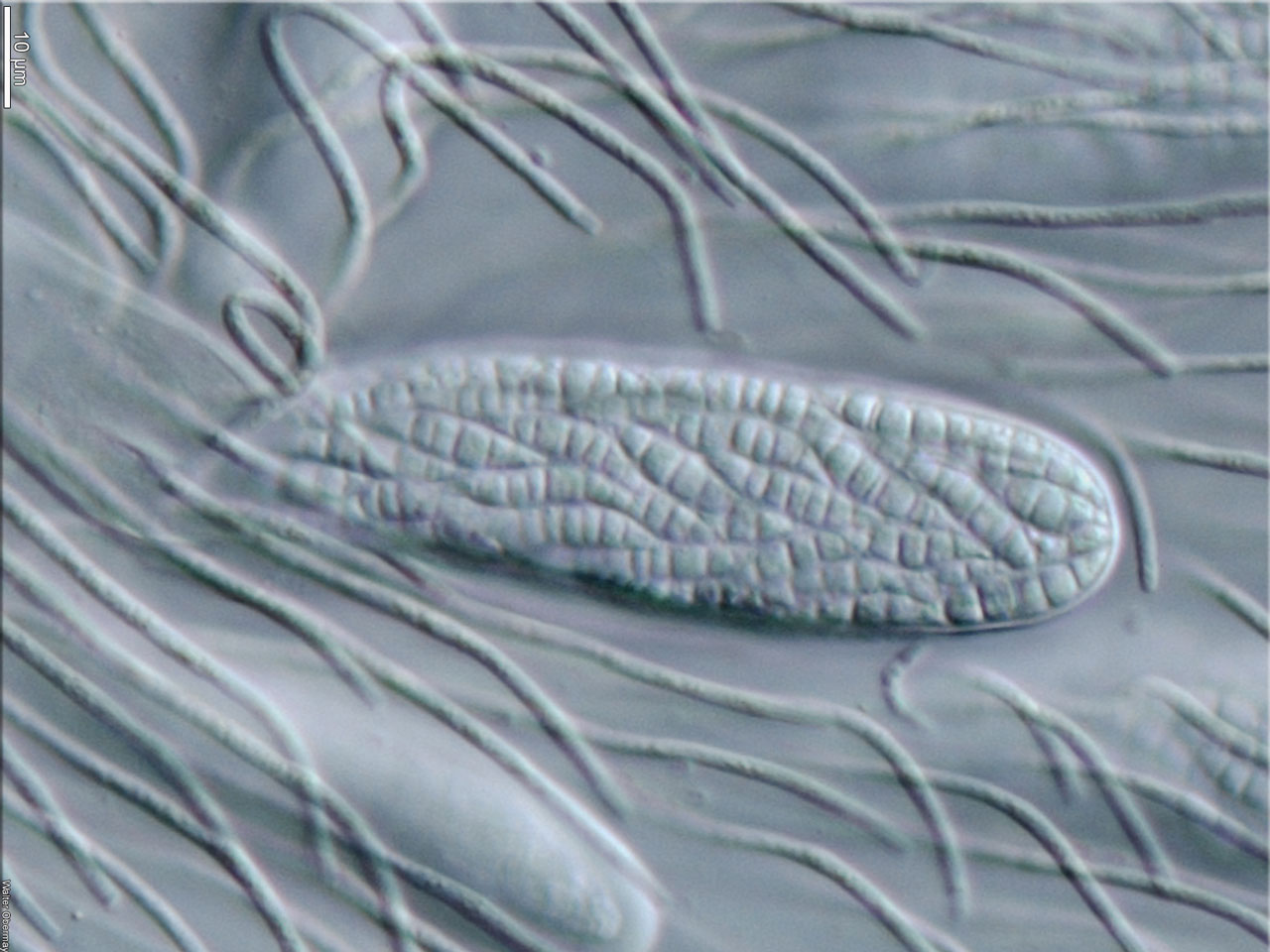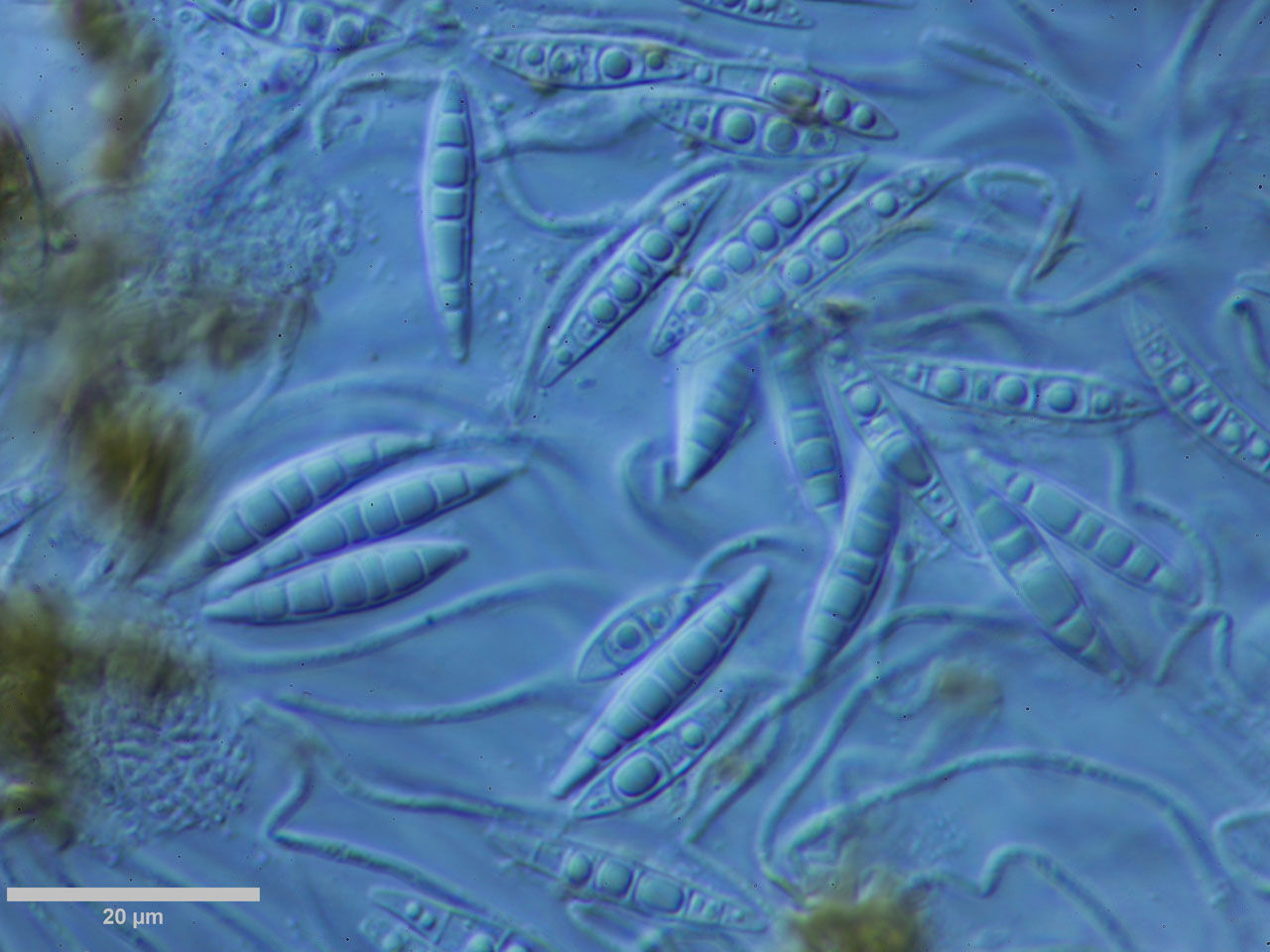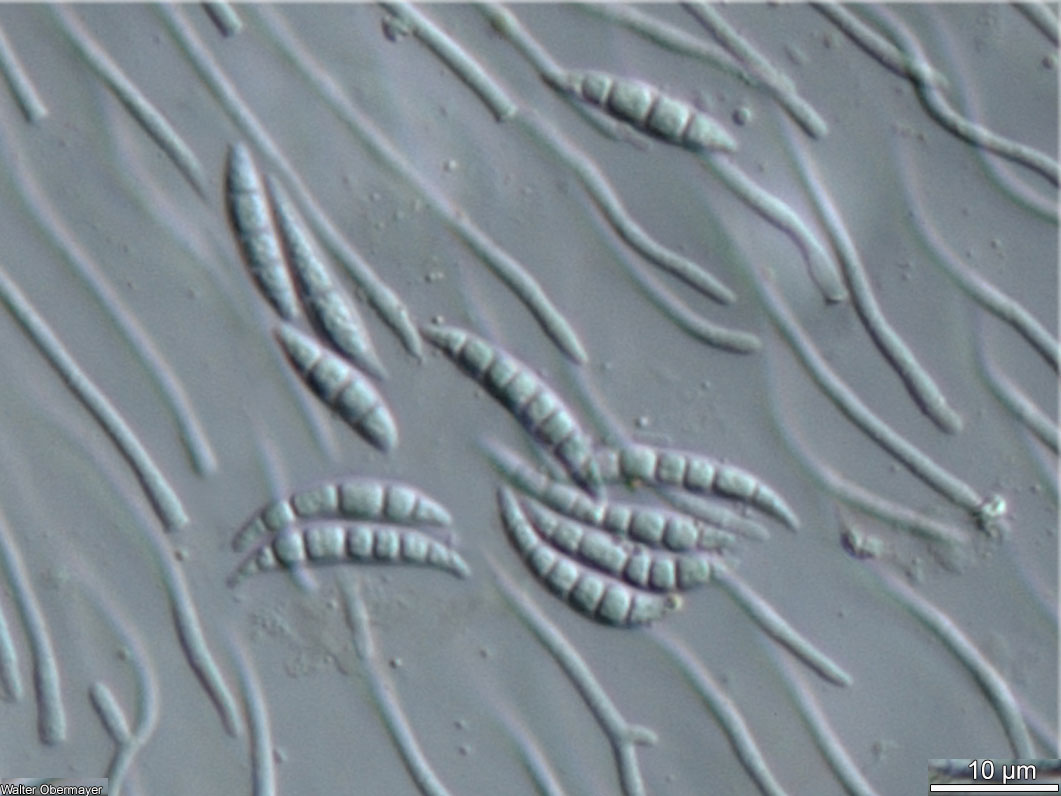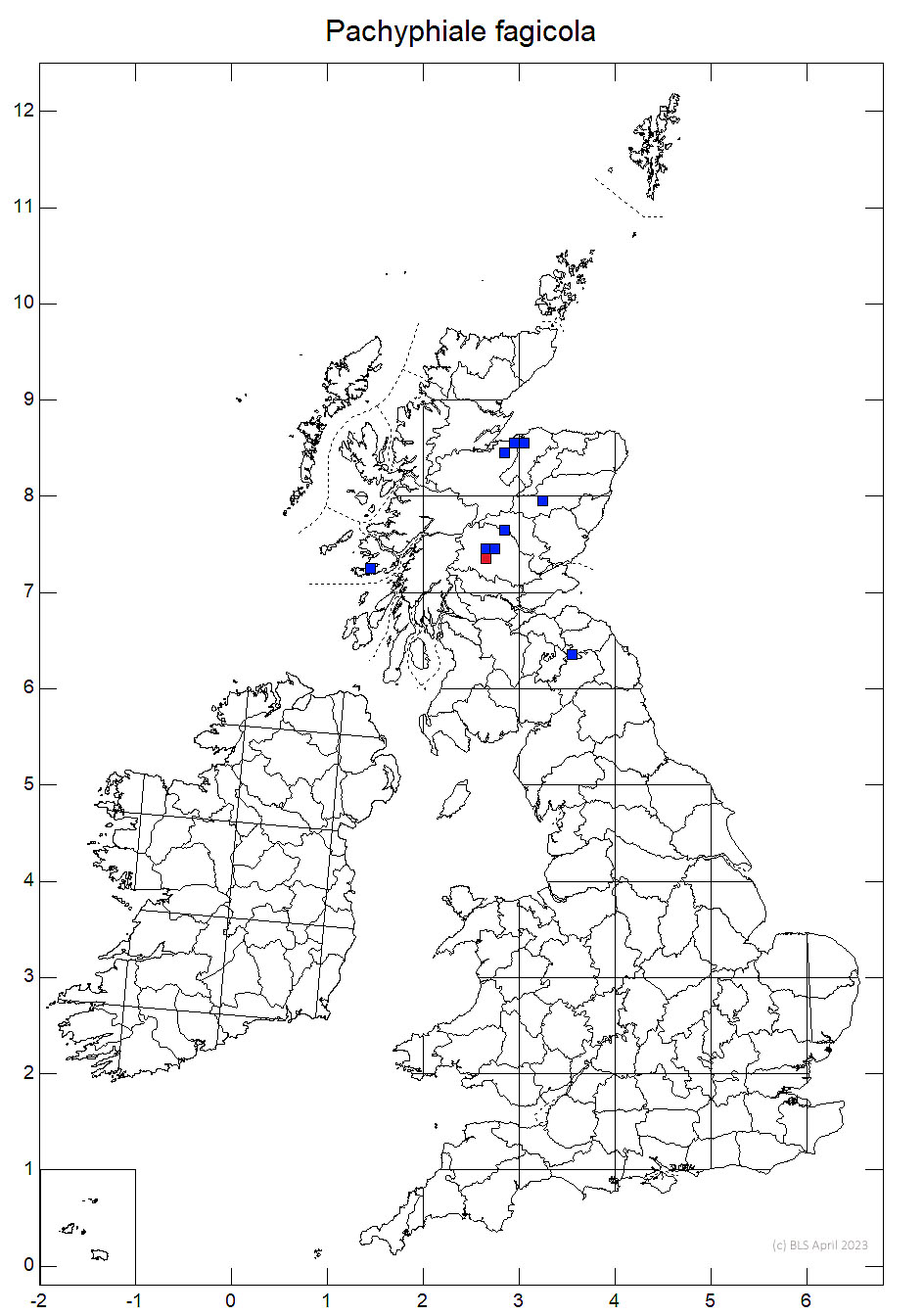This lichen is similar to Pachyphiale carneola, but which differs by its shorter, 15–35 µm long, 3- to 7-septate, fusiform ascospores, the ends rounded or shortly acute, compared to the 38–80 µm long, 9- to 15-septate, acicular, straight or somewhat curved or flexuose, with sharp-pointed ends acospores of P. carneola. A field hint are the rather duller, darker brown apothecia. A species of old trees with base rich bark in sub-oceanic areas of Scotland, where it has mainly been recorded from Wych Elms. There are worryingly few recent records and the lichen may be threatened with extinction in Britain, but a discovery on an Oak in 2025 is encouraging. Targeted searches are urgently required.
Like Pachyphiale carneola, but differs in the more immersed thallus, the often more crowded, rather duller, darker brown apothecia, often with a less widely exposed disc, and shorter, 15–35 × 3.5–5 µm, 3- to 7-septate, fusiform ascospores, the ends rounded or shortly acute. Pycnidia occasional.
Gyalecta derivata is similar, but has 8-spored asci and ascospores with (usually) more than seven septa.
Chiefly on Ulmus glabra in old woodlands and on basic-barked, wayside trees, recently found on Oak.

Rare and very local, mainly C., & E. Scotland, with one old record from Mull and a recent one from Arran. There had only been a single post 2000 record by 2024, but a secord on was recorded in 2025.
Assessed as Near Threatened in 2012, but there has only been a single record (from 2007) recorded between 2000 to 2024. Given that this species was mainly found on Elm this is very concerning, however, there has also been limited resurvey of the sub-oceanic woods of eastern Scotland in the last decade or so. Potentially more sites may survive, and a new one was found in Arran on Oak in 2025, but a resurvey is urgently required and, on current evidence, the species could be reassessed as Critically Endangered.
Britain: Near Threatened
Scotland: Priority Taxon for Biodiversity in Scotland
Cannon, P., Coppins, B., Aptroot, A., Sanderson, A. & Simkin, J. (2024). Ostropales genera I, including Absconditella, Belonia, Clathroporinopsis, Corticifraga, Cryptodiscus, Cryptolechia, Francisrosea, Gomphillus, Gyalecta, Gyalidea, Gyalideopsis, Jamesiella, Karstenia, Nanostictis, Neopetractis, Pachyphiale, Petractis, Phialopsis, Phlyctis, Ramonia, Sagiolechia, Secoliga, Sphaeropezia, Spirographa, Stictis, Thelopsis, Thrombium and Xerotrema. Revisions of British and Irish Lichens 38: 1–60.
Text by Neil Sandeson based on Cannon et al (2024)
